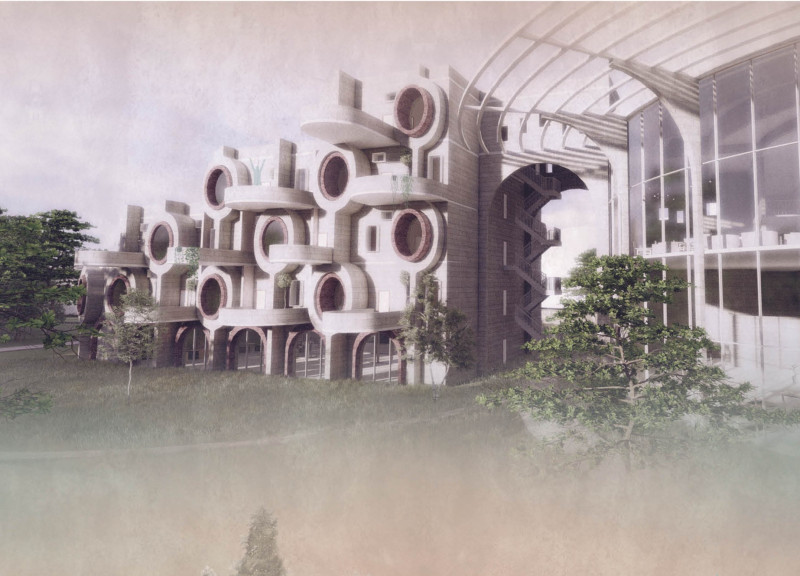5 key facts about this project
At the core of this architectural endeavor lies the concept of connectivity—connecting people with each other, as well as with the surrounding landscape. This is reflected in the layout, which encourages movement and flows seamlessly from one space to another. The design prioritizes communal areas that promote social interaction, integrating spaces for gatherings, events, and recreational activities. These multifunctional spaces are strategically positioned to maximize natural light and views, creating an inviting atmosphere that encourages people to dwell and interact.
The architectural language employed throughout the project is characterized by a careful selection of materials that balance durability with aesthetics. A combination of glass, steel, timber, and locally sourced stone creates a harmonious facade that feels both contemporary and rooted in the local context. The transparent elements of glass facilitate visibility and connection with the outside world, while the warmth of timber adds an element of comfort. The stone, chosen for its regional significance, grounds the structure in its geographical location, tying it to the history and texture of the area.
Key details of the project demonstrate its unique approach to sustainability. The design employs green roofs and biophilic elements, promoting biodiversity and integrating nature into the built environment. Rainwater harvesting systems are seamlessly incorporated into the architectural scheme, ensuring the project minimizes its ecological footprint while contributing positively to local water management systems. Such considerations highlight a commitment to ecological stewardship, evident in every aspect of the design.
The project's elevation not only serves aesthetic purposes but is also a response to environmental considerations, such as wind patterns and solar orientation. Overhangs and shading devices are systematically integrated into the design to mitigate heat gain while allowing for natural ventilation and daylighting. The roofline is sculpted to infuse dynamism into the silhouette, engaging passersby and drawing them into the space.
Interior architecture further complements the overarching design philosophy, with spaces arranged to facilitate flow and ease of navigation. Varied ceiling heights and spatial configurations create distinct zones, defining areas for quiet contemplation and social interaction without the need for physical barriers. The careful selection of furnishings and finishes contributes to a cohesive experience that resonates with the project's objectives.
This architectural project serves more than just a functional role; it embodies a vision for a community-centric space that is responsive to its environment and the needs of its users. The commitment to sustainability, the thoughtful choice of materials, and the focus on communal engagement set this project apart as a significant addition to the urban fabric.
To delve deeper into the specific architectural plans, sections, and designs, readers are encouraged to explore the project presentation. Engaging with these elements will provide further insights into the innovative architectural ideas that underpin this noteworthy endeavor. The exploration promises to reveal the intricacies and intentionality behind the design and how it resonates with its users and environment alike.


 Daniel Robert Febvre
Daniel Robert Febvre 




















